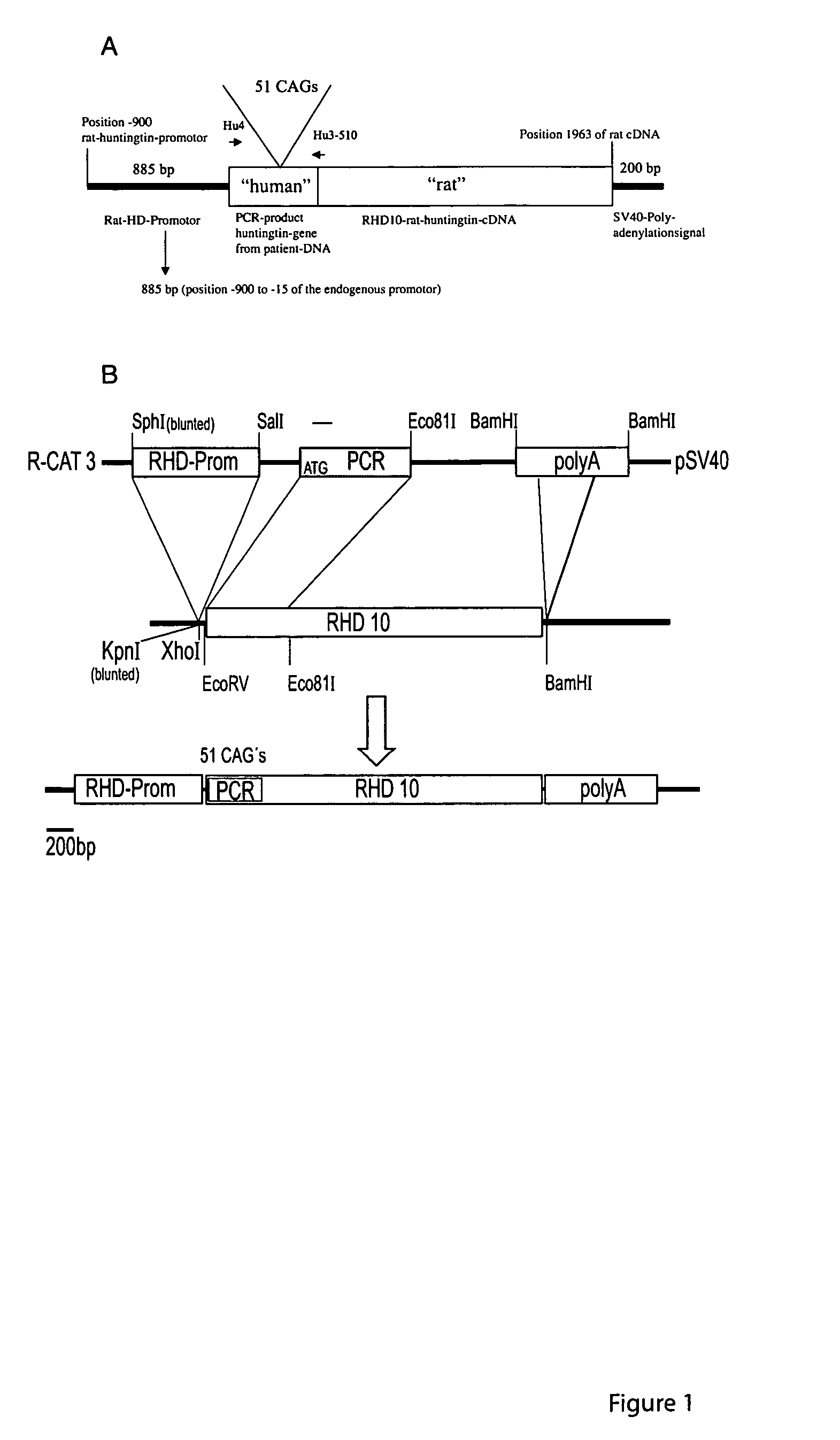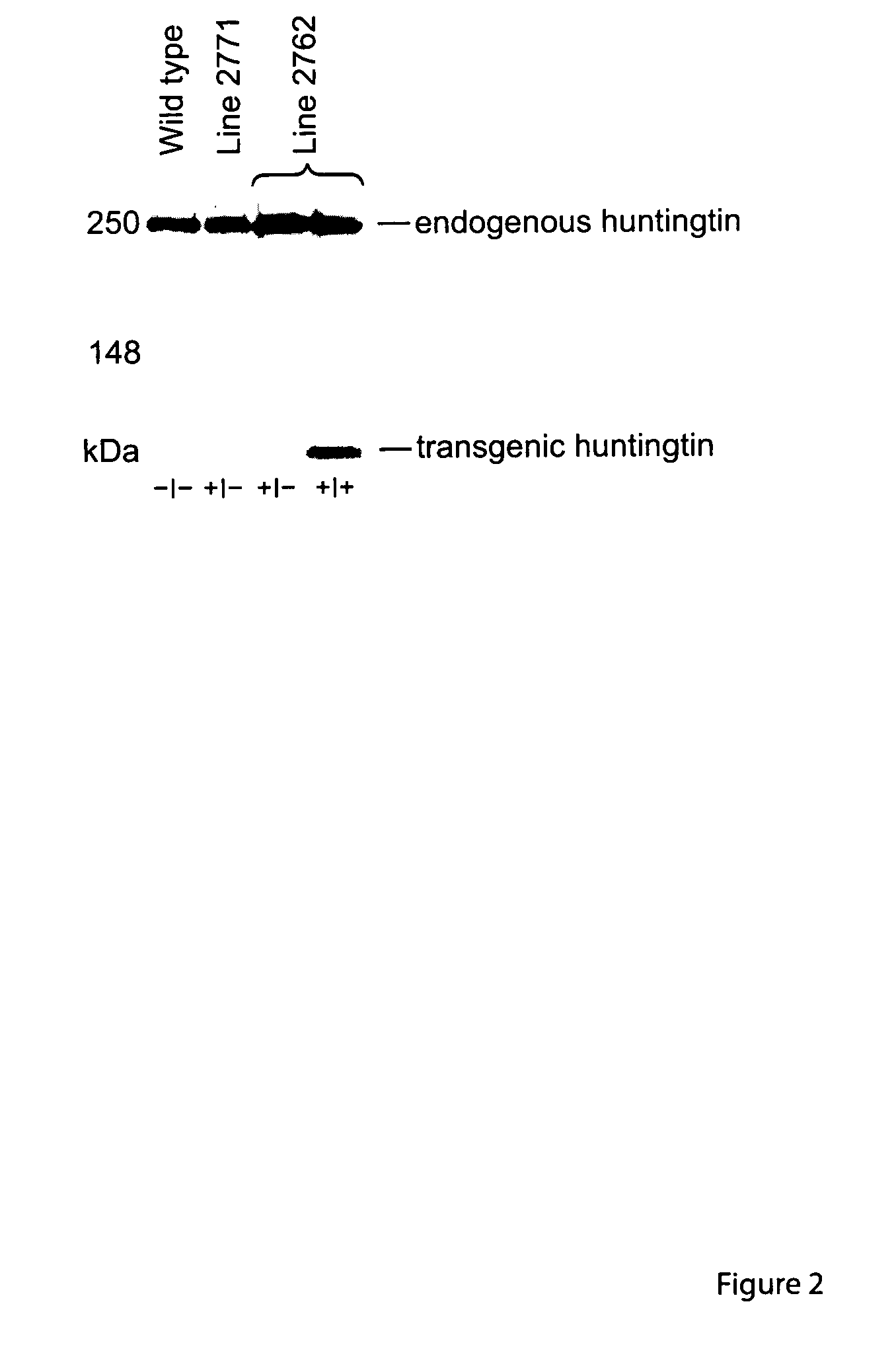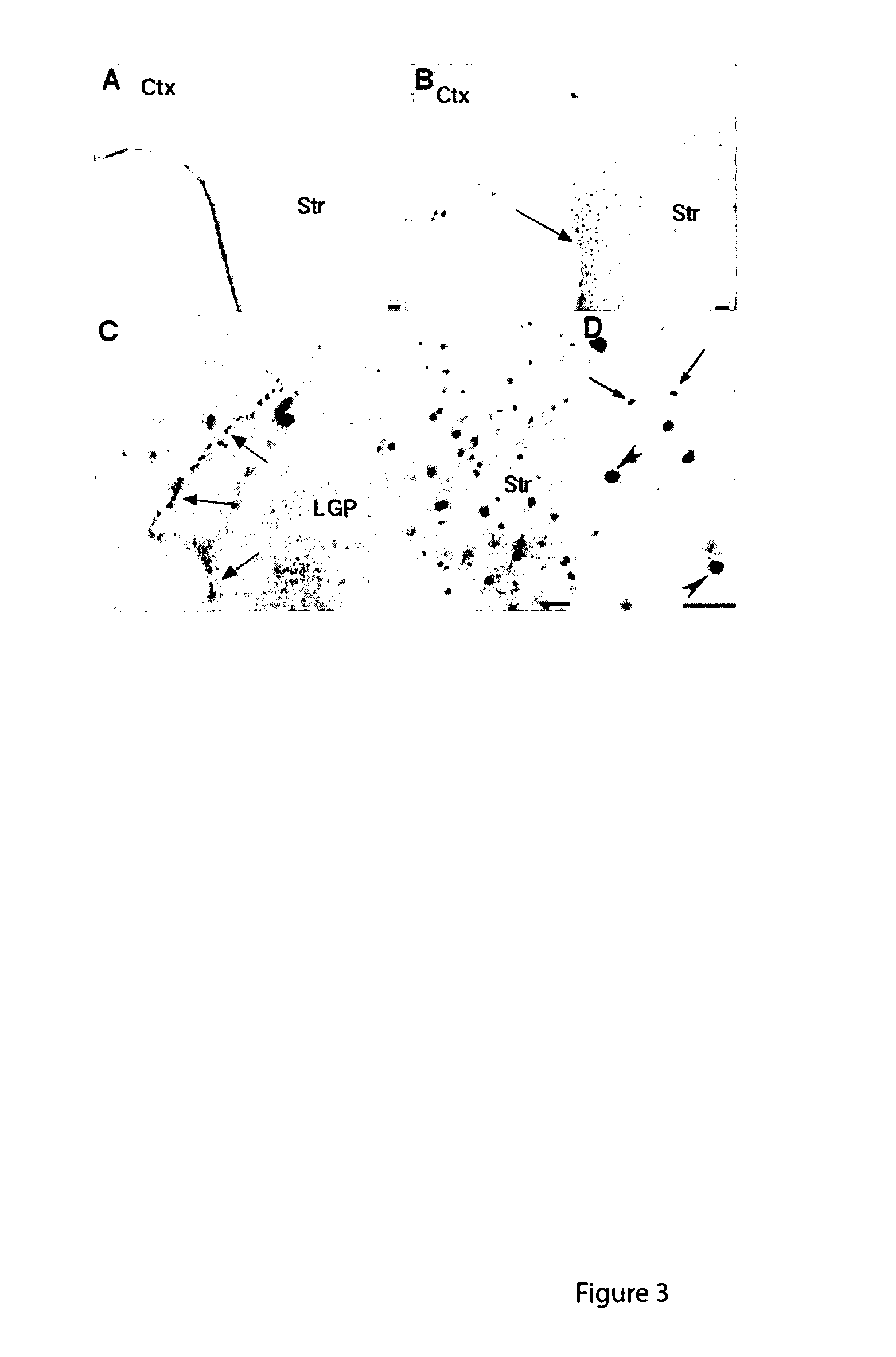Transgenic rat as animal model for human huntingdon's disease
a technology of rat and animal model, applied in the field of nucleic acid constructs, can solve the problems that other co-morbidities cannot be recognized, and achieve the effects of reducing 1cmrgglc, enlargement of the lateral ventricle, and significant reduction of glucose metabolism
- Summary
- Abstract
- Description
- Claims
- Application Information
AI Technical Summary
Benefits of technology
Problems solved by technology
Method used
Image
Examples
example 1
Discussion (Example 1)
[0069] The results manifest the generation of HDtg rats and the expression of the transgenic huntingtin in the brain. This represents the first successful generation of a transgenic rat line for a human neurodegenerative disorder.
example 2
Introduction: Identification of Pathognomonic Changes in the Central Nervous System of HDtg Rats
[0070] In the preceding example, we have described the generation of HDtg rats and the expression of the transgenic huntingtin in the brain of two transgenic rat lines. In the following example 2, the identification of HD-specific changes in HDtg rats of line 2762 is described in detail. The description comprises (1) inclusion bodies and neurophilic aggregates in the striatum by immunohistology, (2) neurochemical alterations of tryptophane metabolism and its kynurenine, catechol and indoleamine metabolites in the CNS by HPLC analysis, (3) enlarged ventricles and focal lesions in the striatum by MRT scans, and (4) reduced glucose utilization in the striatum and in the cortex by PET studies.
Materials and Methods of Neuropathological Examinations and Neuroimaging (Example 2)
Immunohistological Identification of Inclusion Bodies and Neurophilic Aggregates
[0071] While under deep anesthes...
example 3
Introduction: Characterization of Typical Behavioral Alterations in HDtg Rats
[0086] In the preceding examples, the generation of HDtg rats and the expression of the transgenic huntingtin in the brain of two transgenic rat lines (Example 1) as well as the identification of HD-specific pathognomic changes in the brain of line 2762 were described. In addition, the suitability of the present invention and the model, respectively, for neuroradiological methods such as MRT and PET could be proven. In the following example 3, the further characterization of the phenotype as well as the characterization of the behavior of the HDtg rats of line 2762 is described in detail. This comprises (1) monitoring of growth, reflexes, and lethality, (2) description of emotional alterations, (3) description of cognitive differences, and (4) description of deficiencies in motor function. In general, the characterization of the HDtg rats followed the principles for the characterization of mice with unkno...
PUM
| Property | Measurement | Unit |
|---|---|---|
| degree of freedom | aaaaa | aaaaa |
| length | aaaaa | aaaaa |
| diameter | aaaaa | aaaaa |
Abstract
Description
Claims
Application Information
 Login to View More
Login to View More - R&D
- Intellectual Property
- Life Sciences
- Materials
- Tech Scout
- Unparalleled Data Quality
- Higher Quality Content
- 60% Fewer Hallucinations
Browse by: Latest US Patents, China's latest patents, Technical Efficacy Thesaurus, Application Domain, Technology Topic, Popular Technical Reports.
© 2025 PatSnap. All rights reserved.Legal|Privacy policy|Modern Slavery Act Transparency Statement|Sitemap|About US| Contact US: help@patsnap.com



